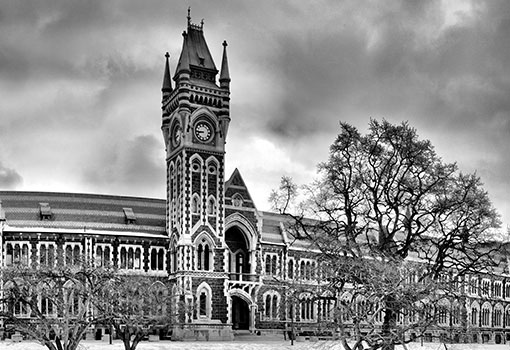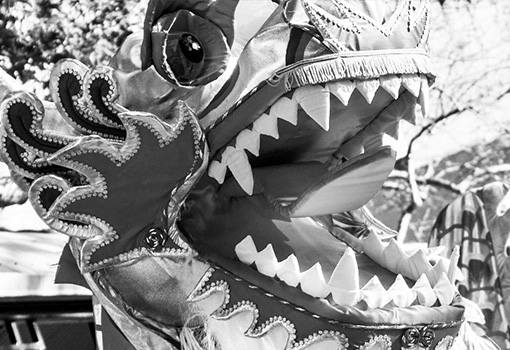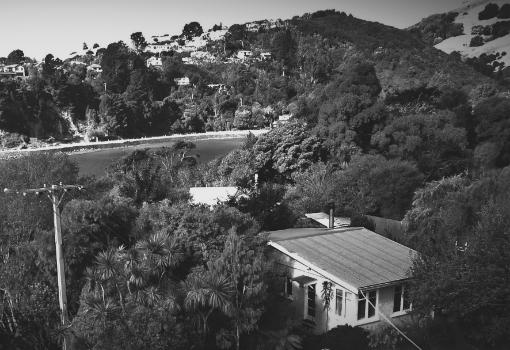
Winners of the Lan Yuan Dunedin Chinese Garden Student Essay Competition
Posted: Wednesday Oct 16, 2019
We are delighted to announce the winners of the Lan Yuan Dunedin Chinese Garden Student Essay Competition, presented by the Dunedin Chinese Gardens Trust in partnership with Dunedin Public Libraries and Dunedin UNESCO City of Literature.
The challenge was to write about the Chinese Garden in the context of the remarkable contribution of the Chinese community in Dunedin and Otago from the gold rush to the present day. Congratulations to:
1st place – Lealia Devereux, Logan Park High School
Lan Yuan, with its decorated walls, terracotta tiled roof and tall entry gate is a distinctive architectural feature in Dunedin’s CBD. The building encircles a pool and rock garden, and to a visitor who walks through, it gives quiet, peaceful contemplation. To have a building that celebrates the local Chinese community and their contributions to the success of Dunedin, is all the more remarkable when considering the harsh conditions and prejudices the first immigrants encountered.
In 1866, the first Chinese immigrants stepped onto New Zealand shores with hopes of gaining a quick fortune through gold mining. They were invited to immigrate to New Zealand by the Chamber of Commerce as the still lucrative gold fields in Central Otago had a critical lack of workers. Many Europeans who arrived in the first rush found the climate (freezing cold in Winter, searing hot in Summer), isolation and poor working conditions too severe, and left. Therefore Chinese were invited, but with provisos. These included that they could not become citizens, had no voting rights, and if they died their burial could not be within the Christian cemetery plots but instead beyond the perimeter. Not surprisingly, they lived within their own groups, as evidenced with remains of crude, vernacular settlements today such as at Arrowtown. However, with the first immigrants it was reported locally that around 100 settlers were
“working harmoniously with the European population; and as it is understood they are satisfied with the prospects offered by this province.” (Hocken Archives)
With initial gold prospecting good, by 1869 a further 2000 Chinese immigrants had arrived in Otago. By 1881 there 4995 men in total (and only 9 women).
Adjusting to the harsh climate, work conditions, few resources and simple accommodation must have been difficult; let alone no or very little English language and a general negative prejudice from Europeans. However, many did determine to stay and became adept at their gold prospecting. With the growing Chinese community, entrepreneurial merchants saw that supply of goods was an alternative (and probably easier) way to prosper. These merchants included Ho A Mee, who had been deputy to a leading Chinese merchant in Melbourne, and Ah Lum. Some, like Ah Lum, were fluent in English and Chinese, and supplied goods to both European as well as Chinese. This provided a link between the two contrasting cultures. Lum’s store at Arrowtown, within the Chinese settlement, also acted as a social meeting place and offered accommodation. Further, alternative businesses with incomes were also established. Chew Chong arrived in Otago in 1876 and discovered ‘Jew’s ear fungus’ in the bush. He set up a local business to gather the fungus and export it to China, where it became a popular delicacy. He also contributed to the local economy as he ventured into the dairy industry, the butter he produced was considered among the best in New Zealand. Others became farm labourers, rabbiters, market gardeners and railroad builders
“[The Chinese] developed significant market gardening operations … contributed generously to hospitals and spent freely when they were on a good claim, supporting the local economy” (Julia Bradshaw)
In the late 1870s, gold became scarce and Chinese miners soon found themselves without work. Anti- Chinese prejudice became more evident as less gold was being sold. In order to prevent a further influx of Chinese immigrants, New Zealand introduced the Chinese Immigrants Act of 1881. Under this Act, any Chinese passengers arriving had to pay a poll tax of 10 pounds (equivalent to $1720 today), and one passenger could arrive per 10 tons of cargo. Later, 1896, poll tax was raised to 100 pounds (equivalent to $19,200 today), and only one passenger could arrive per 200 tons of cargo. With gold prospecting having become unprofitable for most, many Chinese returned to China. Further, The Chinese Immigrants Act severely restricted any new arrivals, so the population of locals decreased markedly.
Yet some immigrants did remain, and the Chinese gardens celebrates both the early, temporary population as well as those who stayed. Many who stayed moved to Dunedin and set up businesses such as greengrocers, fruiterers and laundries. Most lived and worked in the South CBD area, which became locally referred to as ‘The Devil’s Half Acre’ as it included gambling dens and brothels. However, over time it can be seen that many of these businesses contributed to Dunedin’s economy. By the 1960s, descendants of these early Chinese had become successful professionals all around New Zealand.
“New Zealand has become their home and country. They have changed from being New Zealand-Chinese to Chinese-New Zealanders, a new ethnic entity. This full acceptance is the greatest achievement of the writer’s generation and his childrens’, earned by mixing with and facing and sharing the obligations of the wider society.” (Steven Young)
In Dunedin and Otago, local Chinese have made life-long friendships with European-New Zealanders, and with diverse careers including doctors, lawyers, accountants, their engagement is within the community, and they can no longer be viewed as separate. Nor do they any longer have distinctly different legal rights. Newer generations of Chinese immigrants are now residents and citizens here too, with contributions expanded to acupuncturists, herbalists, ‘Chinese medicine’ doctors, include ownership and rental of commercial buildings.
In conclusion, Chinese immigrants contributed in many significant and positive ways to the establishment of Otago. Their struggles, efforts and successes are particularly recognised in Dunedin with the Lan Yuan gardens (opened 2008). This garden is a tangible way to recognise and celebrate the Chinese immigrants who first came to Dunedin to prospect for gold and then later established themselves in a broad range of activities and careers. Dunedin is the richer for their presence.
Bibliography
https://blogs.otago.ac.nz/international/2018/12/14/being-chinese-in-dunedin-not-as-foreign-as-you-think/
https://www.scmp.com/lifestyle/article/2102620/how-chinese-gold-miners-helped-build-new-zealand-and-how-discrimination
https://nzhistory.govt.nz/keyword/chinese
https://researcharchive.lincoln.ac.nz/bitstream/handle/10182/4030/Chinese_gold_mining_Presentation_Notes.pdf?sequence=2&isAllowed=y
https://www.rnz.co.nz/news/top/323266/the-remarkable-journeys-of-nz's-chinese-goldminers
2nd place – Joelle Gatenby, Columba College
Lan Yuan- Representing Chinese Community Contributions to Otago
The Dunedin Chinese Garden, Lan Yuan (蘭園), was officially opened in September 2008. Created with the support of the Shanghai Municipal Government and the Dunedin City Council, the beautiful garden is fully authentic, and creates a bridge that can connect China and New Zealand for the future. Full of rich culture and history from China, it successfully attempts to intertwine beautiful traditional Chinese Garden architecture with New Zealand aspects. The garden is the only authentic Chinese Garden in New Zealand, and only one of three outside of China, while also being the first to be built in the Southern Hemisphere. The garden evokes the memory of the Chinese in Otago, in the past and presently. To fully understand and appreciate the contribution Chinese people had throughout the Otago community we need to flash back to the start of the gold rush in Central Otago, and travel forward to present day.
Tracing back to the late 19th century, Chinese gold miners contributed greatly to the development of the Otago area. The Chinese miners were resilient and brave throughout the fatigue and oppression they faced. They had a tenacity in finding gold. But, unfortunately, they suffered a large amount of discrimination and hardship during their time in Otago. It is therefore important that Otago holds something memorable and significant that can represent them and their hard work. In recent times Dunedin has seen a large number of Chinese tourists, and new permanent residents, that influence our region and our national economy positively. They adapt and join us to live in our beautiful region. Peter Chin was a Chinese man who was Mayor of Dunedin for two terms, from 2004 to 2010. He has helped further grow the bond between the two countries as he contributed greatly to the establishment of the exquisite Lan Yuan.
蘭園 is an appreciation for these Chinese people who first arrived in Otago during the gold rush period, as well as those who stayed to contribute to Dunedin City’s business centre. It is the main, most recent effort of promoting Chinese Culture and heritage in Dunedin, and is constantly strengthening the desirable connection between Otago and it’s Sister City Shanghai, and furthermore the relationship between New Zealand and China. It is important to realise that Chinese immigrants of today are not the first Chinese immigrants, the first to come to New Zealand were the Chinese gold miners 150 years ago. Currently, China has become increasingly more important to NZ recently due to the ever rising demand for meat and dairy products, and a rise in the number of tourists and permanent residents. These strong connections are very important for the future prosperity of both countries.
Upon entering the garden, you will be transported to a world of rich Chinese history and immersed in a full traditional experience. During the entire building process in Shanghai, 17th Century traditional Chinese garden building methods were applied which further acknowledges the history of Chinese in Otago. As you walk through the corridors paved with hand-made herringbone pattern tiles you are immersed in a beautiful Chinese landscape. Flower symbols, potted plants, sculptures and curved bridges intertwine perfectly together to give a very sensual experience for any visitor, from any nationality. You can confidently walk forward and see the fascinating, delicate details and effort that has been put into the remarkable garden. This effort of creating Lan Yuan reflects the astonishing effort of Chinese people in the Otago region that is worthy of attention.
Lan Yuan commemorates the large contribution of Chinese people to the history and culture of Dunedin and the wider Otago region. As said by the Dunedin Chinese Garden trust in their vision statement: “The garden is a gift to the city for all of New Zealand, honouring the past, celebrating the present.” It will sit in the heart of Dunedin for future generations to experience and reflect what the Chinese have generously given to Otago. We can be confident that the relationship between China and New Zealand will be strong for many years to come in the bright future.
3rd place – Eleanor Dunn, Columba College
Intricate stone masonry, vivid cherry blossoms and flowing willows, perfectly framing a crystal clear lake. The aroma of orchids, the soft hum of a mandolin. A place of solitude, serenity and harmony; an emblem of peace. Peace, not only in the literal sense of the escape that it provides from the hustle and bustle of city life but in the figurative sense, a token of world peace, of amity and resonance between cultures. A place renowned for the sense of togetherness and fellowship that’s its festivals represent, the unique opportunity for people of all walks of life to immerse themselves in the fascinating, profound depth of the Chinese culture. This is Lan Yuan - the Dunedin Chinese Garden.
The mantle of the Chinese in the Otago region has always been an intricate thread, sewn in the tapestry of New Zealand being. From 1866, when the pioneering resilient, unassailable Chinese men arrived on our shores to mine for gold, to today, when people of Chinese descent contribute to our economy in a myriad of ways, they have always played an important role in our success as a city, and as a country.
From factors such as the boost they bring to our economy, to the deeper role these assiduous, ambitious people play in our identity as a Pacific Rim country, their contribution is undeniable.
The Chinese have always heavily advanced New Zealand as a nation and have been embraced. They have reciprocated the warmth shown towards them with open arms. Lan Yuan, for example, exemplifies their willingness to demonstrate, to educate and to share their talents and artwork, language and culture. Chinese people’s inherent enthusiasm towards immersing New Zealanders into their intricate culture is evident, and Lan Yuan has allowed for this to thrive in Dunedin, Otepoti. Mr Malcolm Wong, who works for Otago Community Trust, said of the gardens in an NZAsia interview, “the good thing we’ve found with the Lan Yuan is that everybody worked well together. It’s been a journey for the mana whenua, the Scots and the Chinese, and many other people from other ethnic races. It’s been a great journey and it’s not over” - a nod to the strong sense of togetherness that the gardens bring.
The Chinese Garden is infamous as an oasis of nature, amongst the hustle and bustle of the city. It is unique - the only true scholar’s garden in the Southern Hemisphere. Intricately and authentically crafted from the hands of Chinese artisans used to carve the stone, to the Chinese-quarried stone used, Lan Yuan is a true asset to Dunedin. The purpose of Lan Yuan was to display the ongoing strong relationship with our sister city, Shanghai. From the onset of this project, guidance from the Shanghai Museum and Shanghai Construction and Decoration Company weighed into the authenticity of the Gardens as an oriental oasis in a Westernised country. The designer, Associate Professor Cao Yongkang, said that his goal in the design was ‘to present Dunedin’s people and New Zealand [with] the authentic flavour of a Chinese garden.” This has truly been achieved. From within the stone walls of the garden, one feels as if they truly have been transported to Mainland China. A place of belonging and permanence, history and culture permeates - every stone, every leaf, every fish in the pond, each telling a story of a people. A journey of heritage with inspiration from the Jiangnan area of China to the heart of Dunedin.
“Culture”, conceptually, is a conglomeration of cuisine, language, music and religion. All of these aspects of Chinese culture have almost seamlessly integrated into the New Zealand way of life -from the way people of all races anxiously anticipate Chinese New Year and the Spring Festival, to our innate love of authentic Chinese dishes. Through the highly anticipated celebrations such as the Lunar New Year and the Spring Festival, Chinese culture is showcased, understood, and appreciated, by people of all walks of life.
New Zealand, on a fundamental level, is a very young country, and so, when Chinese gold miners arrived, bringing their cuisine, religion, and language, this enriched our culture, which is evident today.
Many parallels can be drawn between the Maori and Chinese cultures, such as the respect shown towards elders, and so their impact has deftly complimented Māori culture.
Lan Yuan represents so much more than just the picturesque oasis that it is. It is not only a place for the Chinese, but it is also a place for everyone to connect, to relax, to appreciate the beauty of life. It is a long term symbol of world peace, serenity, harmony between different cultures. It is a deep, figurative symbol of the permanence of the Chinese presence in Dunedin. Lan Yuan - it is here to stay.
4th place – Lindsay Hu, Otago Girls High School
Neat, strong,and yet artistic , the two words "LAN YUAN" are beautifully framed on the archway, which stands out in the Dunedin city. It's a bit different from the other buildings, with the different shape and also two lion statues guarding with full of prestige, exotic. A four-metre wall separates everything behind from the rest of the city, adding mysterious vibes and bringing out all the curiosity of people - what's behind it?
A large, peaceful lake, connected by zig-zag bridge crosses to the central pavilion, surrounded by numerous structures: tea house, climbing mountains, corridors...... who would have thought? An even exquisite place in the beautiful city Dunedin, in New Zealand, which is known as the god's backyard garden. A place that isn't submerged in all of the amazing things around it, but rises instead. The Dunedin Chinese Garden.
It is not just about the appearance, but also owns a meaningful history. Everything is designed as an ancient scholar. The garden it commemorates the contribution of the Chinese to the city: population as well as elements and culture. A number of Chinese came and settled in at the time of the gold rush. The existence of the garden has brought attractions from both citizens and tourists. Who wouldn't love an incredible place in the middle of a city where you can relax and just enjoy? It offers a chance for people to step out from this busy world and get closer to life and feel it more naturally.
I myself come from Shanghai, the sister city of Dunedin. The first time I glanced at the garden when we were driving by, the familiar style almost brought me back to my home country, and I have been keeping an eye on it ever since. The performances at New Year were truly fabulous. me, along with my host family absolutely loved it. Though unfortunately, I have never been inside the garden, so I have taken my action to volunteer in the coming moon festival. I just know it would be so worth it.
The Dunedin Chinese Garden, with its existed history, would create more in the future, and so will we.



